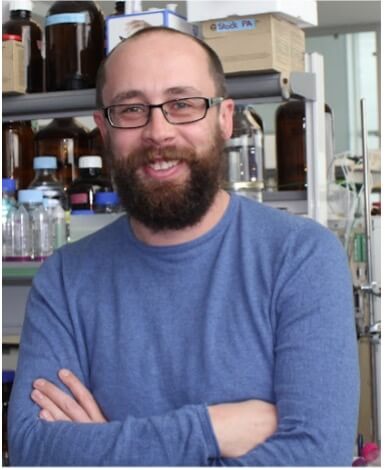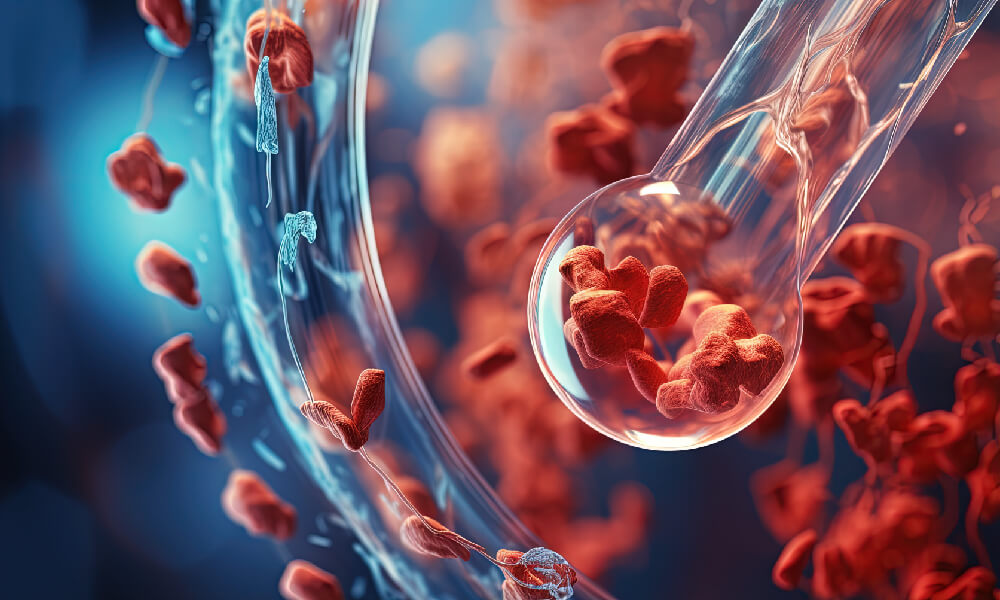<< Back to MOTIFvations Blog Home Page
Classified: A Cell-Free DNA Cancer Signature Ensemble Classifier

February 25, 2025
Table of Contents:
Introduction: Liquid Biopsy: A Non-invasive Tool that Supports Cancer Monitoring
A wide range of studies have individually analyzed various parameters from the cell-free DNA present in human blood samples (so-called “liquid biopsies”) – which include mutations, copy number variations, structural variations, DNA fragmentation, or DNA methylation – to develop a means of detecting and monitoring the development of cancer (Cisneros-Villanueva et al.). However, integrative approaches that consider both epigenetic and genetic factors may represent the ideal means of identifying early cancer signals; as such, this strategy has been successfully reported in recent studies that explored multi-feature approaches to improve cancer detection (Siejka-Zielińska et al. and Jamshidi et al.).
These findings prompted researchers headed by Duhee Bang (Yonsei University) and Tae-You Kim (Seoul National University) to develop a next-generation sequencing platform that simultaneously analyzes multiple cell-free DNA parameters in a single assay and allows the integration of results to establish a multi-feature cancer signature ensemble classifier that outperforms single feature classifiers. Their findings, reported recently in Experimental and Molecular Medicine, highlight how integrating epigenetic and genetic information from cell-free DNA sequencing data derived from liquid biopsies enhances the accuracy of cancer detection, which may improve overall cancer patient management (Kim and Jeong et al.).
Combined Signatures from Cell-free DNA Display Improved Performance in Cancer Detection
Kim and Jeong et al. developed the AlphaLiquid® Screening platform for the early detection of multiple cancers, which combines the simultaneous analysis of whole-genome DNA methylation, copy number, and fragmentomic patterns from non-invasively isolated cell-free DNA samples (from liquid biopsies) in a single assay (implementing whole-genome methylation sequencing or WGMS). The enzymatic methylation conversion technique employed for DNA methylation analysis causes minimal fragmentation damage and coverage bias and permits the accurate collection of copy number patterns and fragmentation profiles (Vaisvila et al.).
The initial exploration of this approach employed samples from patients with colon, liver, lung, and prostate cancers and healthy controls, from which they successfully extracted cell-free DNA from a total of 950 samples (589 cancer and 361 healthy). The resultant WGMS data stably quantified genome-wide DNA methylation patterns at the regional level (areas containing several consecutive CpGs); unsupervised clustering of results revealed that genome-wide DNA methylation patterns differentiated between cancer patients and healthy controls and enabled the accurate inference of the tissue of origin. Assessment of copy number alteration in cell-free DNA through the WGMS data revealed visible events in high-stage cancer patients only; however, unsupervised clustering suggested the presence of fine-scale variations that could separate cancer patients and healthy controls. Meanwhile, the analysis of fragmentation patterns in the WGMS data demonstrated that the fragment size ratio profile also reflected a cancer signature in cell-free DNA at varying magnitudes.
In the next stage of their research, the team built classifiers for each feature type and then constructed a cancer signature ensemble classifier integrating whole-genome DNA methylation, copy number, and fragmentomic patterns; in short, the cancer signature ensemble approach combining the individual classifiers significantly improved cancer signal identification, with the apparent benefit more obvious for difficult cancer types with poorer performance. At 95.2% specificity, cancer detection sensitivity based on DNA methylation (77.2%), copy number (61.4%), and fragmentomics (60.5%) remained high; however, the sensitivity significantly increased when applying the cancer signature ensemble classifier (88.9%). The construction of a cancer signature ensemble for the tissue of origin (for samples classified as suspected cancer) revealed that the integration of all features improved accuracy, even though DNA methylation exhibited the best performance when compared to copy number and fragmentomics. Overall, the cancer signature ensemble classifier (76.4%) provided enhanced accuracy beyond the methylation classifier (74.3%) for tissue of origin.
Integrated Analysis of Cell-free DNA Parameters: The Way Forward for Cancer Detection and Patient Management
These findings suggest the utility of a cancer signature ensemble classifier integrating epigenetic and genetic information for accurate cancer detection and enhanced patient management from non-invasively isolated cell-free DNA samples from liquid biopsies. The authors do note some room for improvement in their approach, including a need to examine additional cancer-associated features from cell-free DNA sequencing, such as fragmentomic endpoint distribution or motif patterns (Herbst et al.). They hope to also develop cancer signature ensemble models from a broader range of patient samples, which would involve patients outside of South Korea and additional cancer types.
See Experimental and Molecular Medicine, November 2023, for more on how the analysis of cell-free DNA from liquid biopsies supports the development of a cancer signature ensemble classifier for the non-invasive detection of cancer.
About the author

Stuart P. Atkinson, Ph.D.
Stuart was born and grew up in the idyllic town of Lanark (Scotland). He later studied biochemistry at the University of Strathclyde in Glasgow (Scotland) before gaining his Ph.D. in medical oncology; his thesis described the epigenetic regulation of the telomerase gene promoters in cancer cells. Following Post-doctoral stays in Newcastle (England) and Valencia (Spain) where his varied research aims included the exploration of epigenetics in embryonic and induced pluripotent stem cells, Stuart moved into project management and scientific writing/editing where his current interests include polymer chemistry, cancer research, regenerative medicine, and epigenetics. While not glued to his laptop, Stuart enjoys exploring the Spanish mountains and coastlines (and everywhere in between) and the food and drink that it provides!
Contact Stuart on X with any questions
Related Articles
Can We Manage Cancer with NEMO Analysis of cfDNA in Liquid Biopsies
February 19, 2025
A team led by Francesca Demichelis and Misha Beltran reports the development of the "NEMO", which assesses DNA methylation at selected regions in cell-free DNA from liquid biopsies to provide a non-invasive means of disease management in aggressive prostate cancer forms. Catch up on this new method!
Read More
Epigenomic Analysis of Cancer Liquid Biopsies - The Power and Limitations
January 17, 2024
The straightforward epigenomic analyses of liquid biopsies from cancer patients represent a minimally invasive means of understanding tumor gene expression programs and supporting patient management. Read how cfDNA as a sample type and new approaches including cfChIP-Seq and cfMeDIP-Seq are being explored for disease profiling.
Read More
<< Back to MOTIFvations Blog Home Page








